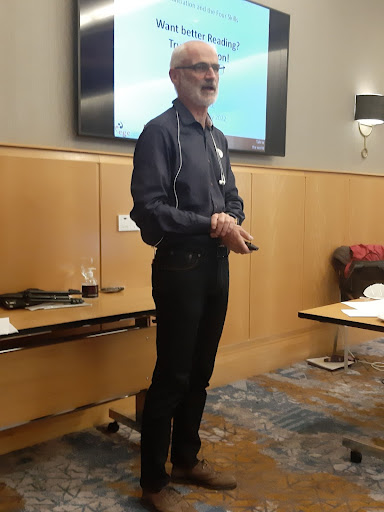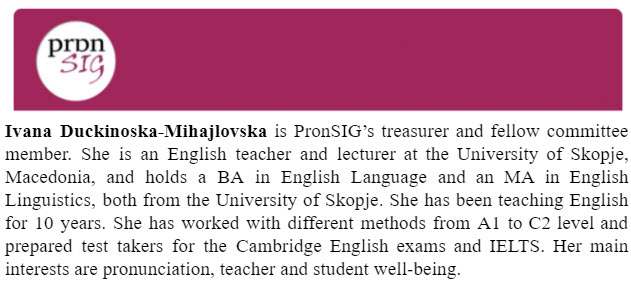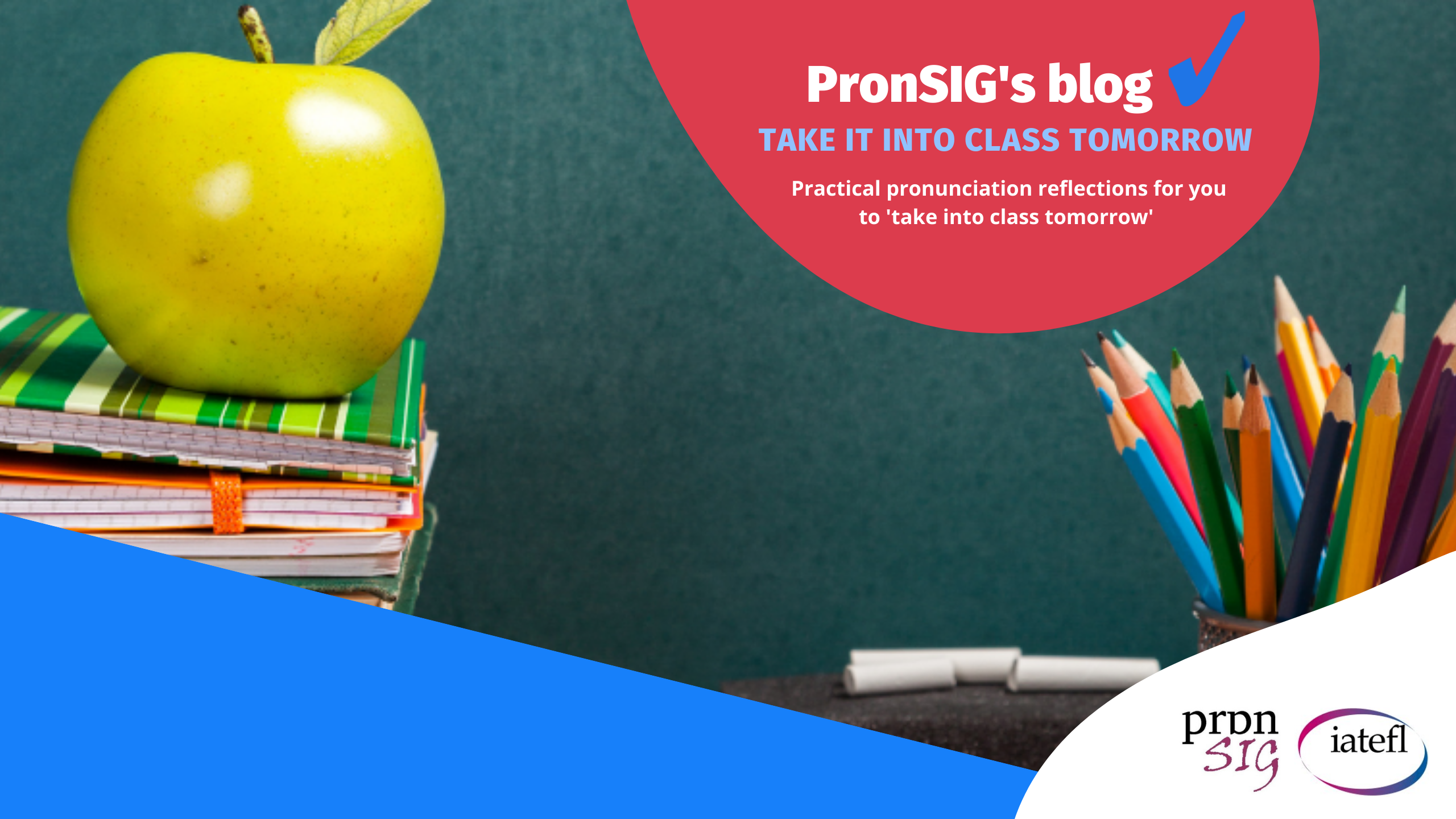by Ivana Duckinoska-Mihajlovska
This year’s PronSIG pre-conference event (16 May) catered for all tastes. Titled Pronunciation and the four skills, our first hybrid event ensured that everyone wrapped up the day with knowledge and tips about integrating pronunciation in the ESL/ EFL classroom. Sharing some of the highlights of an otherwise activity-packed event is no easy task, so in this post, we will focus on Reading and Listening, and at the end of the month, we’ll have a second post, discussing Speaking and Writing.
- Pronunciation and Reading

While one would not normally make a direct link between pronunciation and reading, Robin Walker, ELT specialist and one of PronSIG’s well-known members, mentioned that the problem of reading is also a problem of pronunciation. In fact, pronunciation might be the fifth skill holding the four skills together. He used a nice metaphor of a three-legged stool with the seat itself being the memory held together by the three legs: knowledge of objects or concepts, written form and spoken form. If we take one of the legs away, then the stool is unstable.

Hence, spoken form or pronunciation is crucial to building memory, which in turn, facilitates the reading process.
Walker suggested three ways for improving reading via targeted pronunciation activities:
a) Reading-based activities
b) Spelling-based activities
c) Games
One approach to a reading-based activity is reading aloud a prepared text. Teachers should prepare a text or a poem for students to read aloud; this should contain the features the teacher wishes the students to learn or practice. Students should be encouraged to read it, but when they come across an unfamiliar word, they should ask for the teacher’s help. The teacher can encourage students to guess the pronunciation and explain why they went with that guess. Questions like these help learners become more aware of their L2 pronunciation by seeing and hearing particular letter-sound combinations.
As for a spelling-based activity, a very practical approach is going from sound to spelling. The teacher reads a word, e.g., /fiːnd/, and then invites all possible spelling patterns. It is very likely that students will offer some incorrect spellings; still, that is part of the learning process as again learners establish correct letter-sound combinations.
For game-like activities, please check the resource books Pronunciation Games (CUP, 1995) or the PronPack series (HancockMcDonald ELT, 2017) by Mark Hancock, one of our PCE speakers as well.
- Pronunciation and Listening

Christine Goh, from the University of Singapore, talked about examining pronunciation features through a bottom-up listening activity. Before we delve into the practical takeaway, we will first discuss two important concepts: top-down and bottom-up listening. The former refers to the way we use our prior knowledge to make sense of what we hear, also known as knowledge and concept-driven processing, while the latter refers to the text or sounds that we directly process from the input, hence input or stimulus-driven processing.
So how can the bottom-up processing be used for integrating pronunciation in a listening activity? The target pronunciation feature should be introduced during the pre-listening stage, when learners are prepared to anticipate what they are going to hear. At the same time, if we want to target pronunciation of unfamiliar words, we can ask students to try and pronounce the words or listen to the teacher modeling the pronunciation.
The next phase is listening and viewing when different tasks are set by the teacher. The post-listening activity is, in fact, the one that is essential because now students get to work with the text they processed, which provides opportunities for practising the target pronunciation feature by following these steps:
- Students listen to a short segment of the listening text, only 30 or 40 seconds, and transcribe what they hear. Transcription is fundamental because it helps us teachers better understand how students process the text, i.e., what they hear or think they hear.
- Students engage in collaborative learning by comparing their transcripts and discussing what facilitated or hampered their listening. It is at this stage as well that learners become aware that the problem is not usually just the lack of familiarity with new words, but it extends to a suprasegmental level, e.g., prosody and intonation, chunking or segmenting speech.
- Students listen to the text again without any printed input, which helps them enjoy the rhythm and recognise the new words. In this way, they stay more motivated and feel less stressed about not hearing everything the first time.
This approach can be used to initiate practice on a whole sequence surrounding a particular pronunciation feature.
We hope you find these activities useful and easily adaptable to your teaching needs. As mentioned previously, in our next post at the end of this month, we will focus on the other two skills: Speaking and Writing.
Please check our previous blog posts for more ideas on integrating pronunciation in your classroom. Don’t forget to follow PronSIG on social media and leave your comments below. See you soon!


